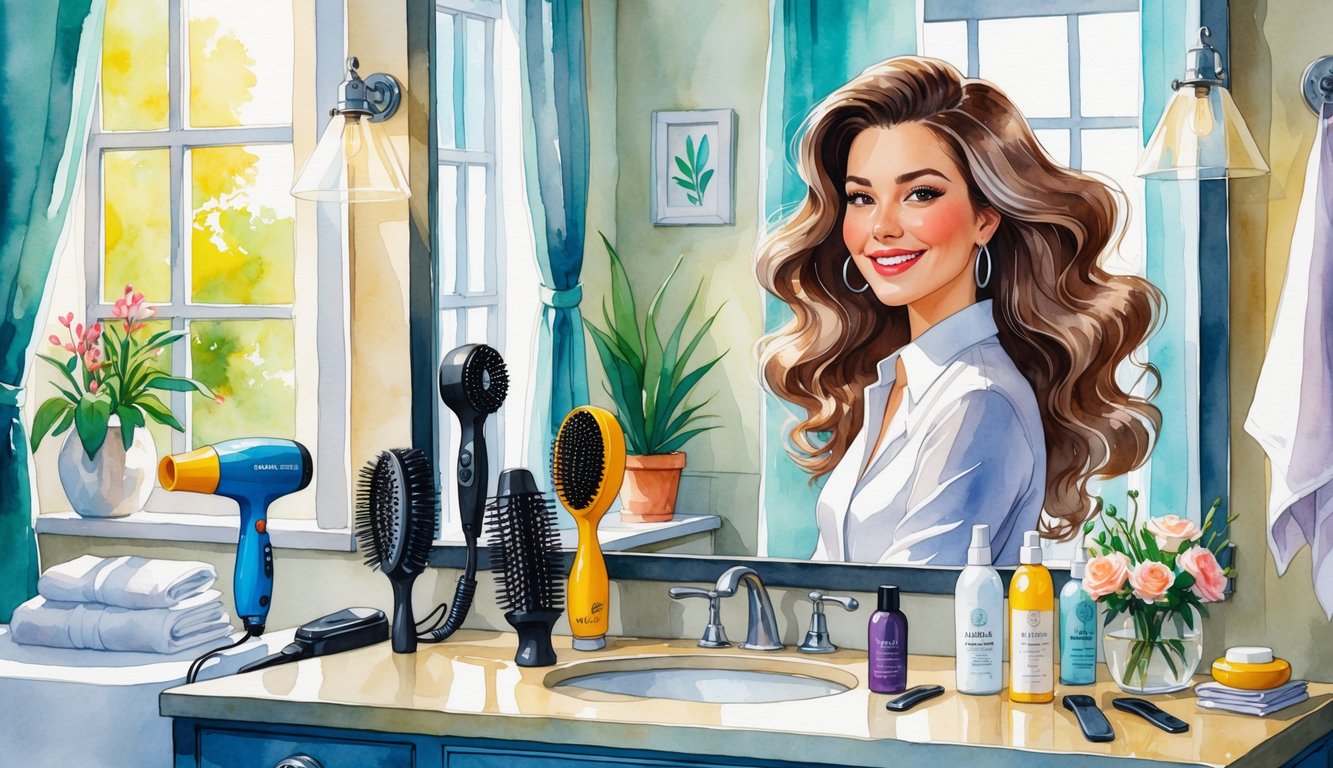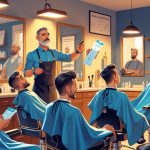
Essential Tools and Products for Salon-Quality Results
Salon-level volume at home? Not a fantasy, just a mess of the right brush, a decent dryer, and a parade of products that either flop or somehow hold for days. My drawer’s a graveyard for failed brushes and sticky serums.
Round Brush Versus Paddle Brush
I’m always fighting knots, round brush rolling away. But the difference is real: round brushes—ceramic or boar bristle—lift roots. Paddle brushes just flatten everything, like ironing hair to your scalp. No volumizer can save you if your brush is working against you.
Stylists groan when clients bring the wrong brush. Boar bristle round brushes distribute oil, make ends look polished. Ceramic ones boost shine, cut frizz, and supposedly dry faster. Paddle brushes? Fine for smoothing thick hair, but forget volume. Voss Salon’s tool guide backs this up. If you want sleek, paddle wins. If you want lift, grab the round brush.
Picking the Best Blow Dryer and Attachments
Standing in front of fifty blow dryers, all screaming “ionic technology”—does that actually mean anything? Pros say adjustable heat and speed are non-negotiable, not just for picky people. Cheap dryers? Guaranteed split ends, no matter what the box claims.
One trick I stole: always use the nozzle. It focuses airflow. Otherwise, hair frizzes out in every direction. Diffuser for curls, concentrator for sleekness—why do companies hide these in the box? Good dryers (T3, Dyson, BaByliss) feel lighter, don’t roast your scalp, and last forever. Attachments mean targeted heat; otherwise, it’s a mystery why half my hair collapses and the other half stands up. The Right Hairstyles’ blowout essentials say the same.
Volumizing Mousse, Hairspray, and Other Styling Products
I used to avoid mousse like it was a can of Aqua Net in a 90s gym bag. I mean, mousse? Felt silly. But then every stylist I trust kept insisting it’s the only way to get any lift at the roots if your hair’s stubbornly flat. I slap a blob on damp roots, blast it with a round brush, and—surprise—suddenly my hair forgets it’s supposed to be limp.
Hairspray. Not the crunchy, shellacked kind my mom used for prom, but the soft, flexible stuff. If I use too much, it’s like I’ve glued my head down. Too little, and my hair collapses by lunch. There’s this whole ritual, apparently: moisture cream for frizz, mousse for volume, then a spritz of flexible spray (Unite, Living Proof, Kenra—pick your poison).
Root lifters, texturizers, all that jazz—half the time I mix products and end up with sticky, dull hair. Stylists warned me in that Easytopten brushes for blowouts review; some combos just aren’t friends. Biggest mistake? No product at all. I used to think the dryer would do everything. Nope. Never works.
When to Use Hair Oil and Heat Protectant
I’m guilty—used to skip heat protectant, then whine about fried ends. Apparently, you’re supposed to spray, cream, or serum something labeled “thermal defense” on before touching any hot tool. Dr. Zoe Draelos (yeah, that dermatologist in Allure) claims anything above 450°F is just hair torture. I still forget and crank my flat iron too high sometimes. Oops.
Hair oil? Last step only. I rub a pump between my hands, run it through the ends, and strictly avoid roots unless I want to look like I haven’t showered in a week. Moroccanoil, Verb Ghost Oil—sure, they work, but if I get ambitious and use it on damp hair, I end up with crispy, overcooked strands. Learned that the hard way.
Honestly, I mess up more than I get it right. Skip mousse? Regret by noon. Too much oil? Baseball cap day. But heat protectant is non-negotiable. If I don’t smell that weird chemical scent before I style, I’m not letting the flat iron near my head. It’s like a burnt tire comfort thing. Don’t ask.
Techniques for a Flawless At-Home Blowout
Blow-drying my hair always takes twice as long as I expect. And if the roots are puffy but the ends are sad, no amount of product saves me. I used to think stylists had super-powered dryers or something. Turns out, they just follow the same steps every time and use the right brush. I forget the order and end up with chaos.
Proper Rough Drying Techniques
Nobody ever warns you how miserable wet roots feel. I watch those salon videos—towel dry so it’s damp, not dripping—but the real secret? Pros rough dry the roots first, before even looking at a round brush. Supposedly, blasting soaking hair with heat is the fastest way to split ends. My friends still do it, then ask why their hair looks fried.
I’ve tried to copy stylists. They keep the dryer six inches from my scalp (I measured, don’t judge). Roots first, always. Flipping my head upside down is awkward, but it actually works to get volume. I still miss spots at the back and then wonder why my hair’s flat there. Every. Time.
Allure swears, in their DIY blowouts guide, that skipping rough drying ruins everything. My mom thought rough drying was just “extra air,” but it’s actually the only way to get volume, especially with fine hair.
Mastering the Round Brush for Bouncy Finish
Round brushes are evil. I get tangled, lose patience, and then curse at the stupid thing. But apparently, if I want that salon bounce—curl at the ends, volume at the top—I need to section my hair and use a round brush that’s the right size. I always forget and grab the wrong one, then wonder why my hair looks weird.
Angles matter. Pull the hair tight from the root, barrel brush underneath, nozzle parallel to the hair, not just blasting randomly. If I twist too fast, the curl falls out. Watching a pro, it’s all in the wrist—set the curl, wait, unroll, don’t yank. One stylist at The Warehouse Salon kept telling me, “smaller sections, bigger volume.” I forget this constantly.
I burn my fingers every time, never learn. Sectioning with clips helps, but hair ties? Dents for days. Bobby pins are better, and Byrdie says it’s not just about creases—it actually helps the shape last. Who knew?
Using the Cool Setting for Long-Lasting Results
My uncle once told me the cool shot was pointless. He’s wrong. The cool setting is literally the only reason my hair doesn’t go limp by lunch when I actually remember to use it. I always forget unless I set a reminder. Who wants to pause and wave a dryer around with tired arms for another minute? Not me. But apparently, every pro does.
They all chant “heat shapes, cool sets.” It’s not a myth. That temp drop seals the cuticle, keeps frizz out. If I skip it, my hair’s flat on my face by the time I get to work. No joke.
So, yeah, blast cool air while the hair’s still on the brush, while it’s warm. That’s the only way I get anything close to a salon finish that actually lasts. Experts swear by it. Cold air feels silly, but it works.



